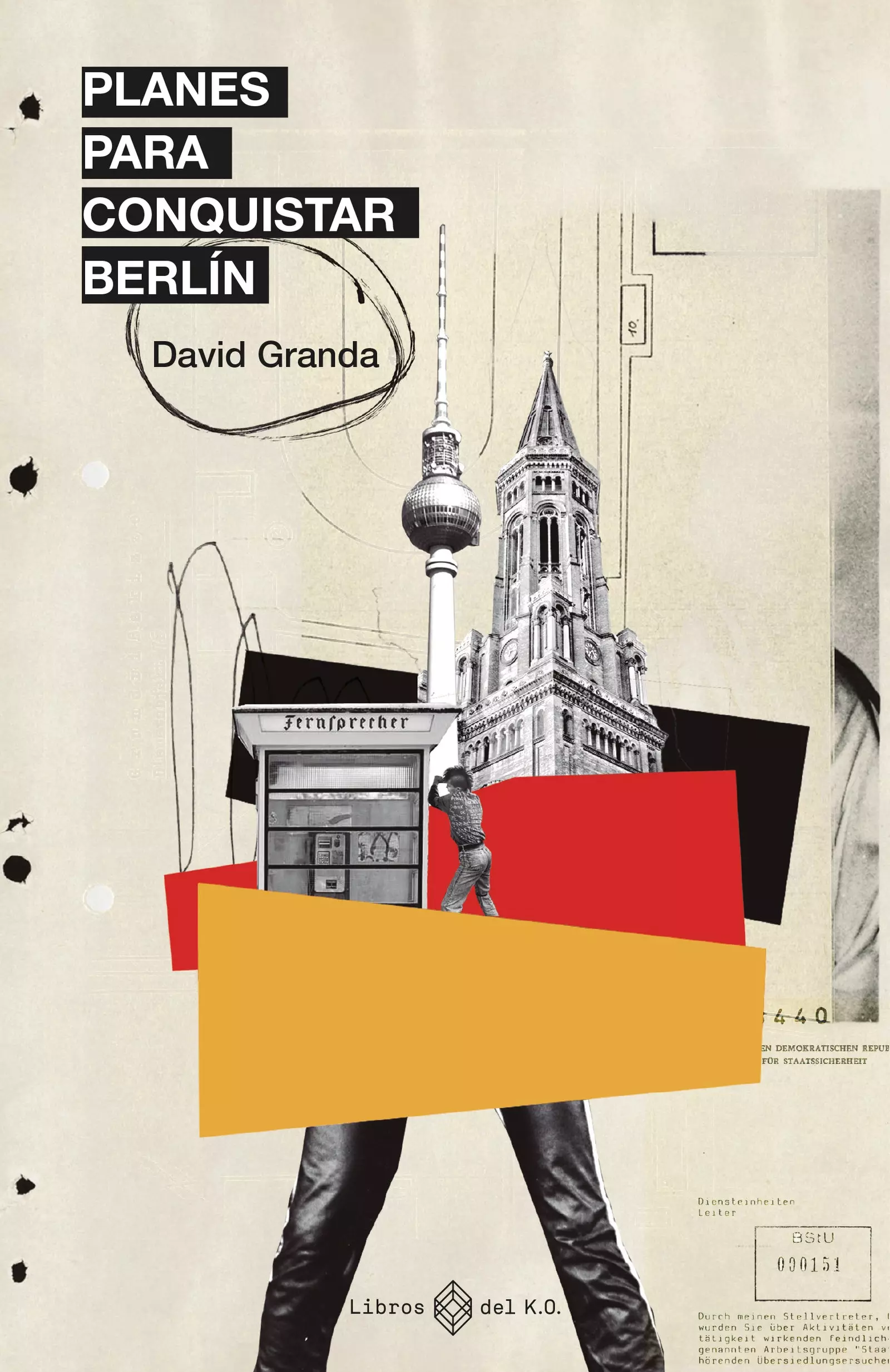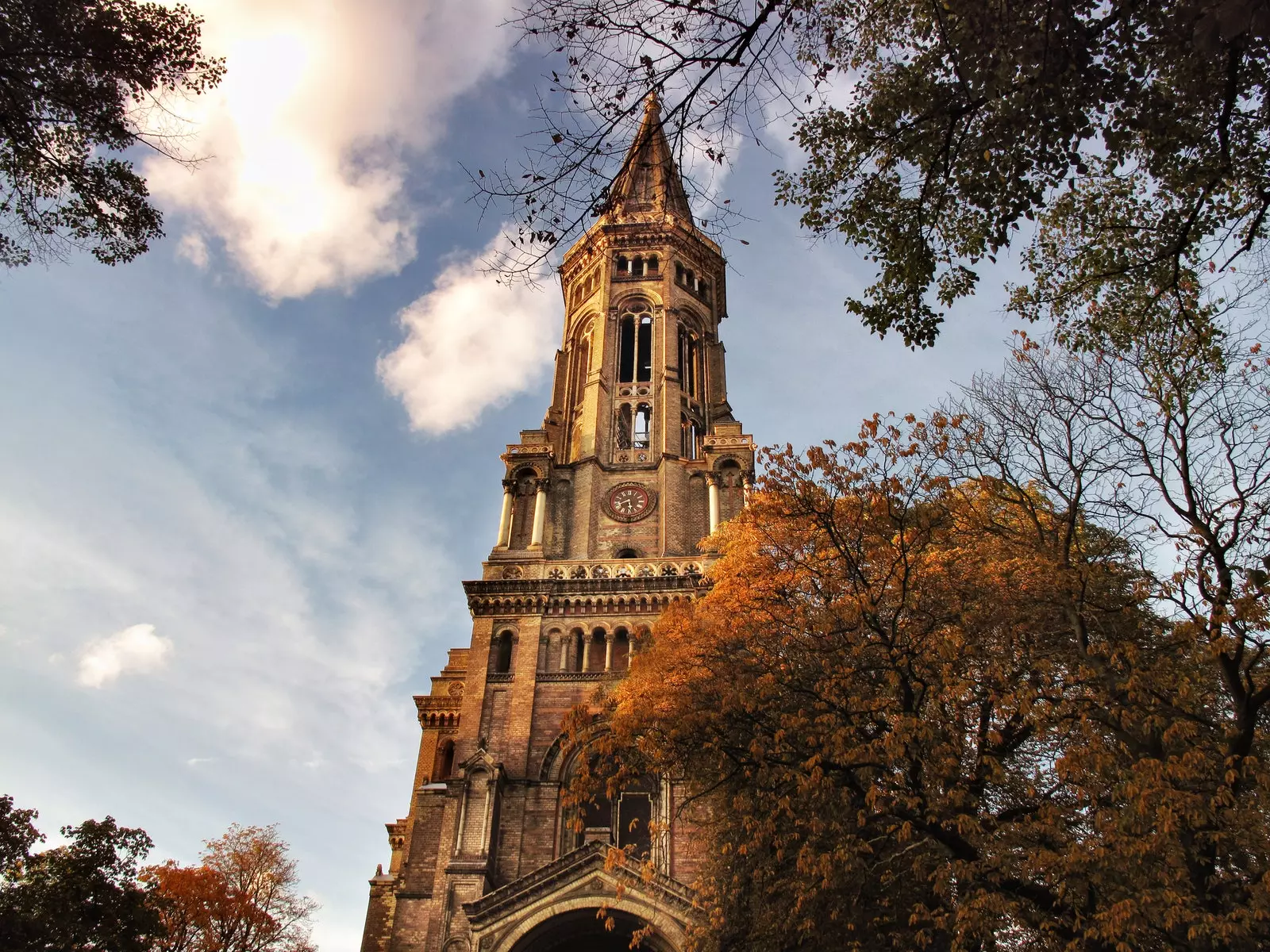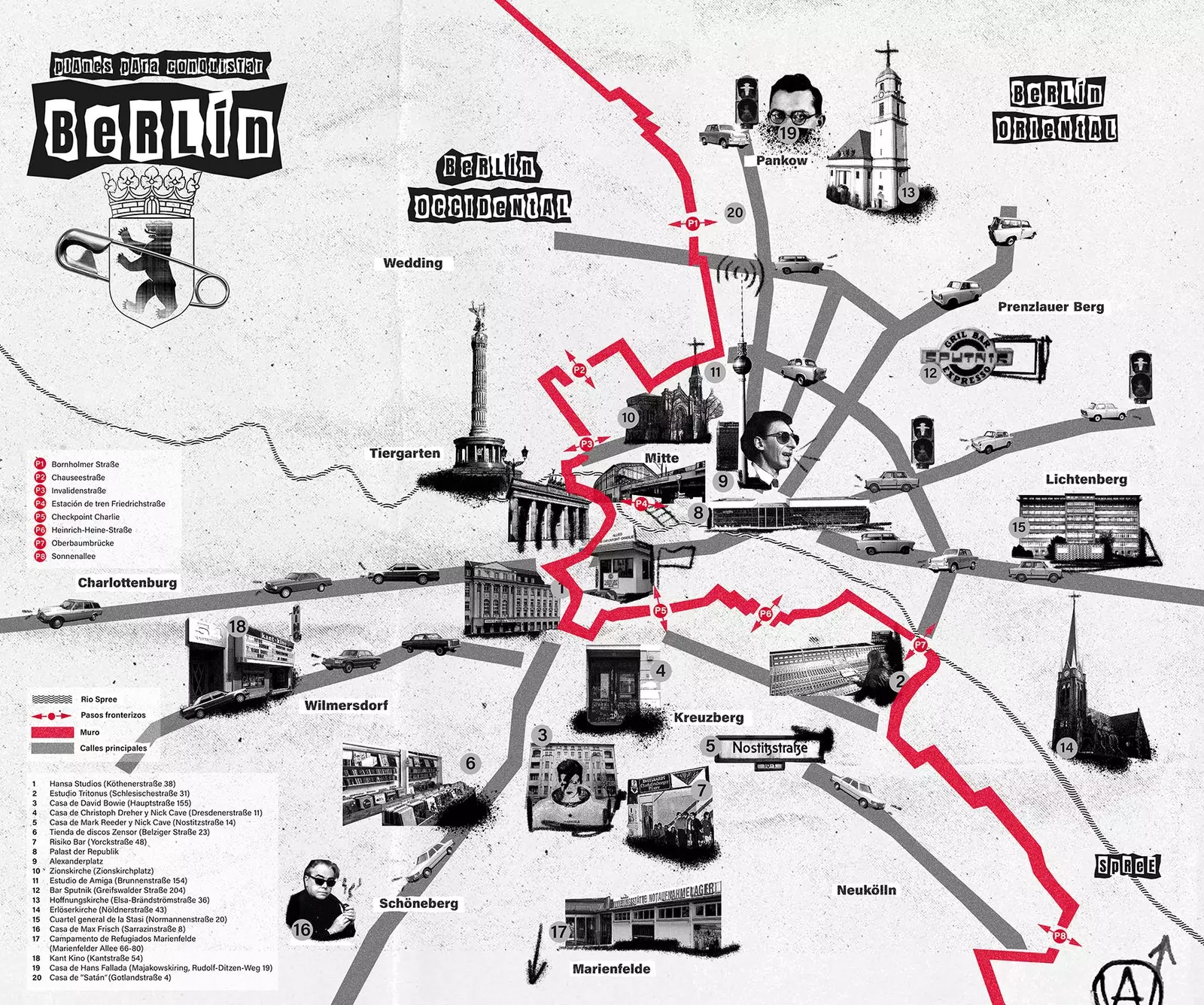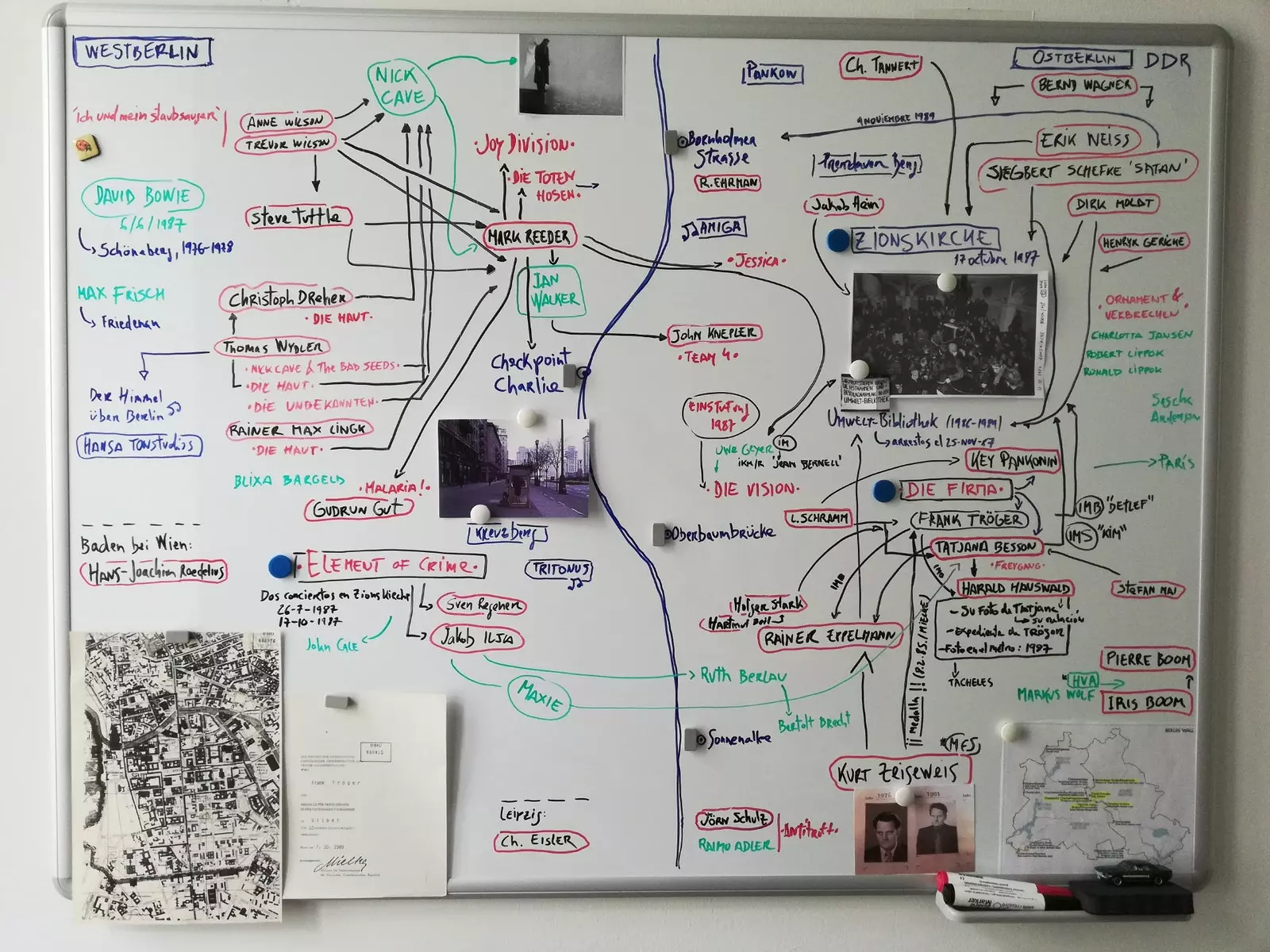"I have put the archivists of the old machinery of the MfS [Ministry for State Security, the Stasi] to search any files related to David Bowie, Nick Cave or Iggy Pop in his years in Berlin. It may take months, but if they find something it would be splendid," he wrote in an email. the journalist David Granada to your publisher at Libros del K.O. A warning that today, more than five years later, we could consider as the germ of Plans to conquer Berlin, title that has just been presented by this editorial that has proposed to recover the book as journalistic format.
It was finally a concert held in October 1987 at the Zionskirche Protestant Church, in East Berlin, the thread that the writer from Madrid began to pull to articulate a text with which he intends closer to the reality of East Germany and in which there is room for characters as disparate as the president of the US. Ronald Reagan or the film director R. W. Fassbinder. Also for Bowie and Pop, let's not forget that the scathing subtitle of the book reads like this: "Spies, Stasi, punk rock and cultural dissidence before the fall of the wall".

Cover of the book 'Plans to conquer Berlin'.
COLLECTIVE AWARENESS
Granda remarks “before the fall of the wall”, because that Die Firma concert with Element of Crime, group that had sneaked in for said performance in East Berlin, was one more drop of all those that had been filling the glass until it was overflowing: “It was a collective awareness. The subsequent arrests to close down the Umweltbibliothek – an emerging opposition niche in Zionskirche – provoked a media repercussion and a wave of solidarity that is at the origin of the massive protests of 1989”.
It is well known to all that the central European city was divided in two since 1961, but not many know such relevant details as that in the German Democratic Republic the State used the groups of Nazi ideology (such as those who broke into the Zionskirche and beat up concertgoers) to suppress countercultural movements and that Protestant churches held Bluesmessen, blues masses, which served to camouflage critical thinking or any type of sensitive or dissenting information.

Zionskirche.
“The concert at Zionskirche, where they performed a punk band like Die Firma and a West Berlin band like Element of Crime, who crossed the Wall clandestinely, without declaring to the authorities his intention to play (and without instruments, which they had to find), was presented as a 'religious service with music'", Grande confirms.
Churches that can now be visited, such as the Zionskirche in Prenzlauer Berg, whose “halo of cultural resistance goes back to Nazi Germany”, In the journalist's words.
Others traces of that past investigated in Plans to conquer Berlin We find them, according to David Granda, in two key neighborhoods: Prenzlauer-Berg in old East Berlin and Kreuzberg in West Berlin. “Bowie fans should visit his former home in Schöneberg, at Hauptstrasse 155, and the Hansa Studios, where he recorded Heroes. Also worth knowing where Nick Cave lived in Kreuzberg. Risiko, the bar of the Berlin scene in Schöneberg, where many traveled a lot without moving from the premises as a result of the consumption of psychotropic drugs, is now occupied by a travel agency. The book includes a fabulous fold-out map Where are the most important addresses?

Map to conquer Berlin.
BERLIN, CAPITAL OF SUBCULTURES
When asked if Berlin is the European capital of alternative cultural movements today, Granda is clear: “Berlin remains the great German capital of subcultures. I would not dare to put a European podium, but without a doubt everything that happened after the fall of the Wall, that vibrant and countercultural Berlin that captivated us all, It is a direct consequence of what happened in both West Berlin and East Berlin during the Cold War.”
Subcultures that, to this day, are still very present in many areas of the lifestyle of the German city: “In electronic music, on labels like Monika Enterprise, by Gudrun Gut, or Grönland, which publishes the latest works by Hans-Joachim Roedelius, one of the fathers of krautrock. In art, at the international art gallery lock, heir to Wohnmaschine, a prohibited art space during the GDR and that carries the work of the photographer Sibylle Bergemann; musician Sven Regener visited him a few hours before performing at Zionskirche. In my favorite bar in the same square of Zionskirche, in front of the protestant temple, the Macke Prinz.

Research organization chart.
REALITY ALWAYS EXCEEDS THE FICTION
Today the new title of Books of the K.O. is fervently topical due to the terrible reality that we are experiencing in Ukraine. Was it something unimaginable or actually cold war wounds never fully healed? “In the 20s and 30s of the last century no one believed in an interwar context: It was the postwar period of the Great War. Only then did we begin to talk about the First and Second World Wars”, argues the also historian.
Every event is important, even a concert from the past; as it is that we journalists dedicate ourselves to untangling the skein (of information). so he did David Granda to shape Plans to conquer Berlin when diving –up to three times– in the Stasi archive, a place where endless threads are still waiting to start pulling: “There are many stories. The almost father-son relationship established between confidant Kim, a young punk musician, and Stasi Commander Schäfer seems revealing to me”, concludes the writer.
